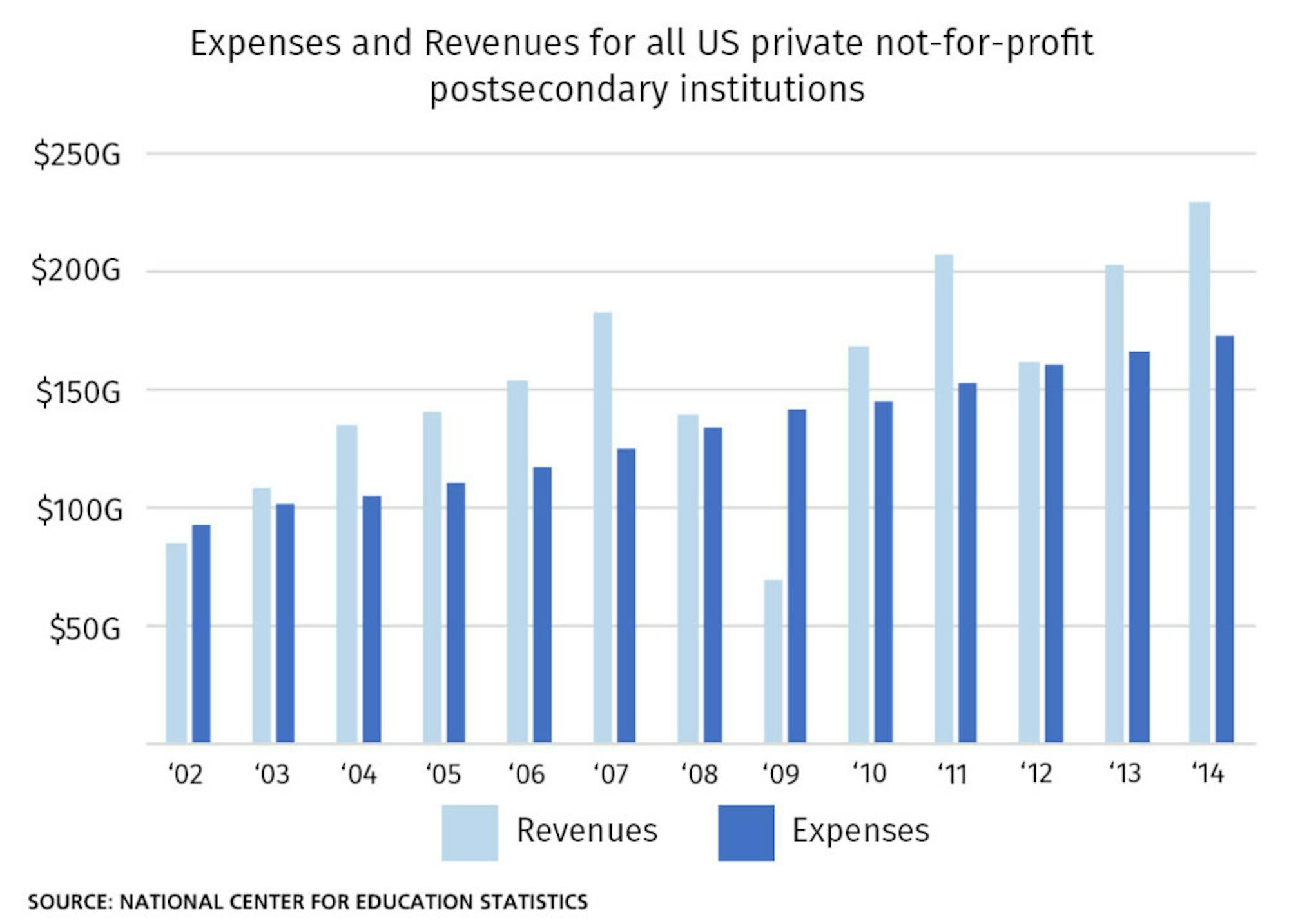This week, I Googled “is Tufts a non profit” and felt pretty ridiculous about my own ignorance. Attending school here costs a lot, but understanding the financial information about this institution is rarely on students’ priority lists. I decided to take a step back from Tufts as a single campus and look at where our college fits into the category of college spending on a national scale.
My searches led me further, to data from the National Center for Education Statistics (NCES) that records the revenues and expenses of post-secondary institutions in the United States. NCES breaks down institutional revenue data about postsecondary institutions into three categories: public, not-for-profit and for-profit, providing data from 2002 to 2014. This got me Googling, and Wikipedia, as always, answered. Tufts’ institutional title is that of a private, non-profit research university, which puts Tufts in the NCES category of private not-for-profit postsecondary institutions. (For postsecondary institutions, there is little distinction between non-profit and not-for-profit.)
With the data provided by NCES, we can model a trend line of overall revenue and expenses of not-for-profit postsecondary institutions between 2002 and 2014. The results are meaningful, even to a non-econ major like me. The revenue of private not-for-profit institutions like Tufts experienced rapid growth over this timespan. The total revenue increases almost every year, with the only significant drops occurring during 2009 and 2012, both of which were years of national financial crises. Even accounting for these drops, the revenues of not-for-profit postsecondary schools more than doubled during this decade.
I also took a look at the total expenses of private not-for-profit institutions over the same period. These climb steadily, yet much less rapidly than the revenue trends. In contrast to the revenue, which increased by 100 percent over the course of the data period, the total expenses increased by only 50 percent. This number is still significant, but its disparity with the revenue increase points out that, on a national scale, revenue for not-for-profit colleges has increased faster than expenses.
For good measure, I examined how Tufts tuition costs have also changed within the same timespan of 2002-2014. In 2002, the cost of a Tufts education (tuition, fees and room and board) was $36,465 according to a Nov. 22, 2002 Daily article. In 2014, that same number was $61,100 according to a Feb. 22, 2014 Boston.com article. That’s an increase of more than 50 percent.
So, what does this mean? Does this data discern anything about how Tufts’ spending may relate to the national trends of revenue and expenses, or does it just make finances even murkier? What we see is that colleges as a whole are widening the gap between what they make and what they spend -- Tufts included. We also see that postsecondary institutions on a national scale have bumped up their stake in our economy. As these trends continue, I wonder what the economic weight of postsecondary institutions will mean for students who attend them.
Tufts by Numbers: A non-profit named Tufts






